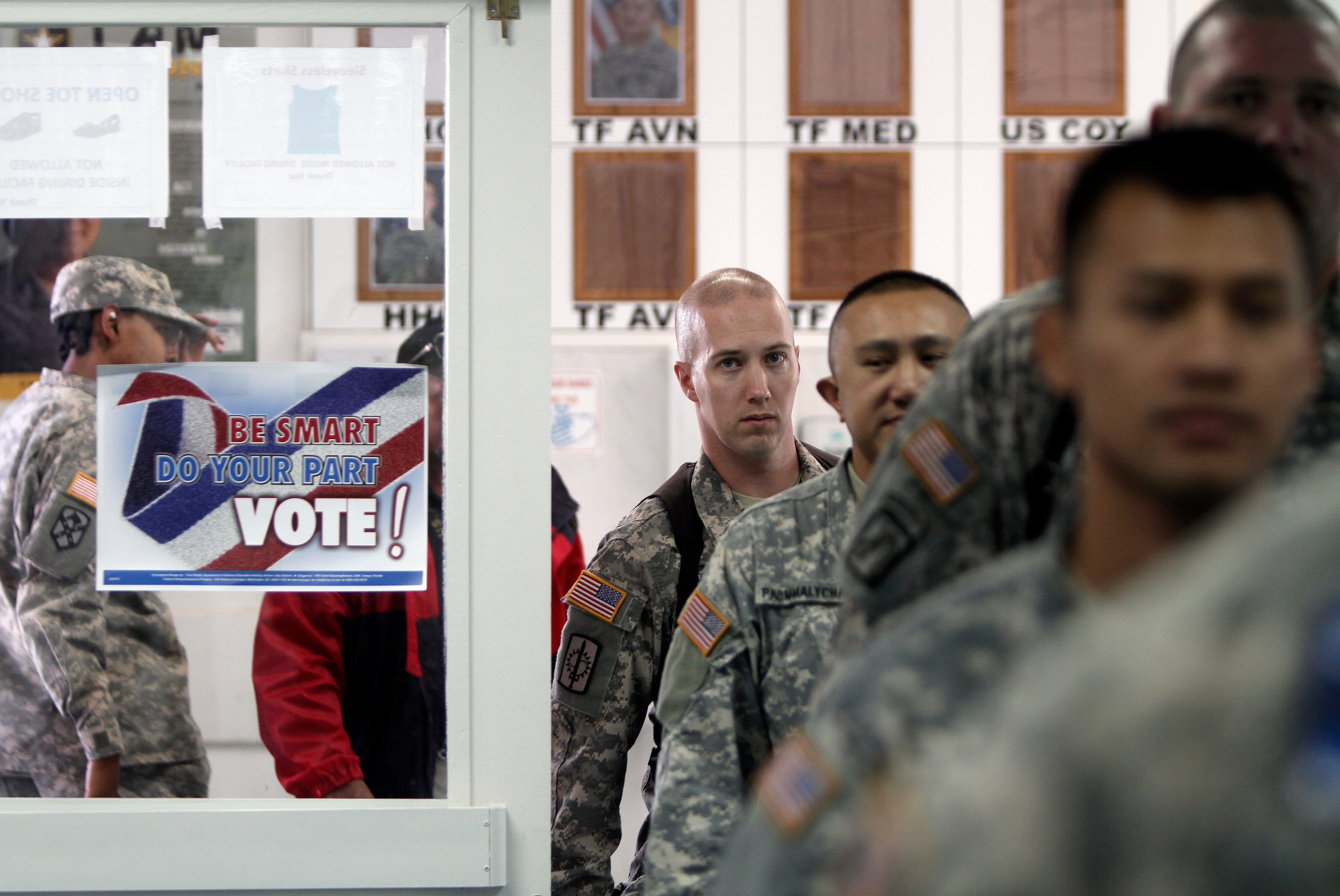After a grueling eight months leading the Navy’s effort to counter Iran-backed Houthi rebel attacks on commercial shipping in the Red Sea and the Gulf of Aden, the aircraft carrier Dwight D. Eisenhower received a reprieve this month when it transited the Suez Canal and headed into the Mediterranean Sea, on its way back home to Norfolk.
During more than 200 days taking down a barrage of Houthi drones and missiles, the Ike became the latest East Coast-based carrier to see its deployment extended multiple times.
Dating back to 2021, carriers Harry S. Truman, George H.W. Bush, and most recently, the Gerald R. Ford, also encountered extended periods underway to fulfill American naval presence requirements amid pressing global events.
Altogether, these carriers spent roughly nine months at sea – up from the standard seven-month deployment schedule.
And while the Ike is now wrapping its deployment, another East Coast carrier isn’t ready to replace its presence in the region – prompting an already deployed West Coast carrier Navy to replace it.

Ike’s latest extended cruise and its replacement once again raises questions about the finite carrier fleet’s ability to respond to a seemingly relentless series of global events that require the uniquely American naval presence of a flattop.
Ultimately, the requirements levied on the carriers by the Navy and combatant commanders are greater than what the 11-carrier fleet can meet, according to Bradley Martin, a retired surface warfare officer and director of the RAND Corporation’s National Security Supply Chain Institute.
RELATED
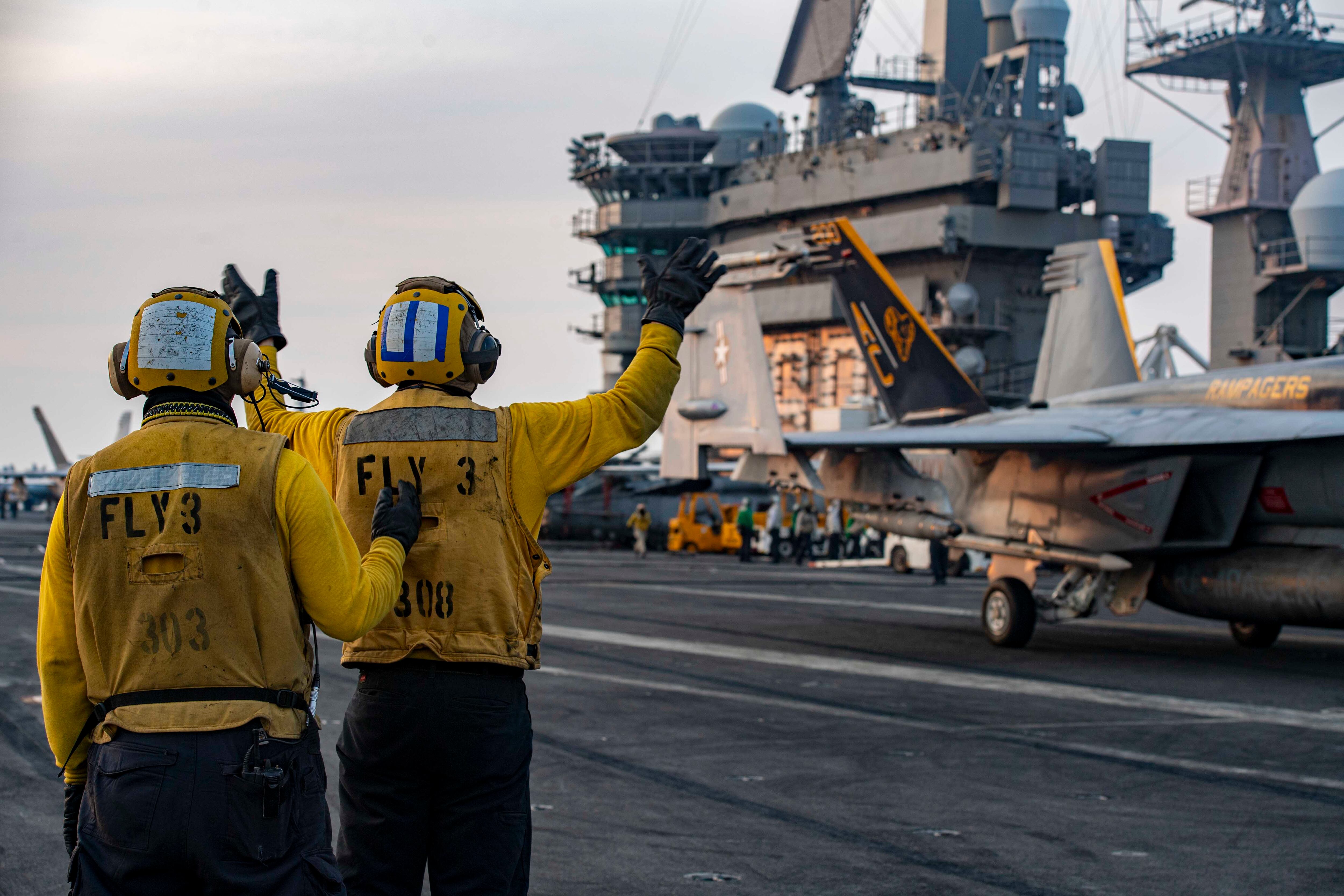
“There really just aren’t enough ships to go around,” Martin told Navy Times. “Now, that’s not necessarily strictly, or always, a carrier problem. It’s also a destroyer or [amphibious assault ship] problem. But it’s a problem of size, it’s a problem of capacity.”
As Ike left the theater and a Houthi battle that officials say is the Navy’s most kinetic since World War II, the Pentagon announced that the San Diego-based carrier Theodore Roosevelt would steam into the Middle East from the Asia-Pacific to replace Ike’s presence and capability.
It will be the first time a non-East Coast carrier has operated in the Middle East since the Japan-based Ronald Reagan headed there in 2021 to oversee the American pullout from Afghanistan.
Meanwhile, Martin said he suspects that such extended deployments will become the norm, given the need for carrier presence in the Middle East, the Pacific and around Europe as the Ukraine war rages on.
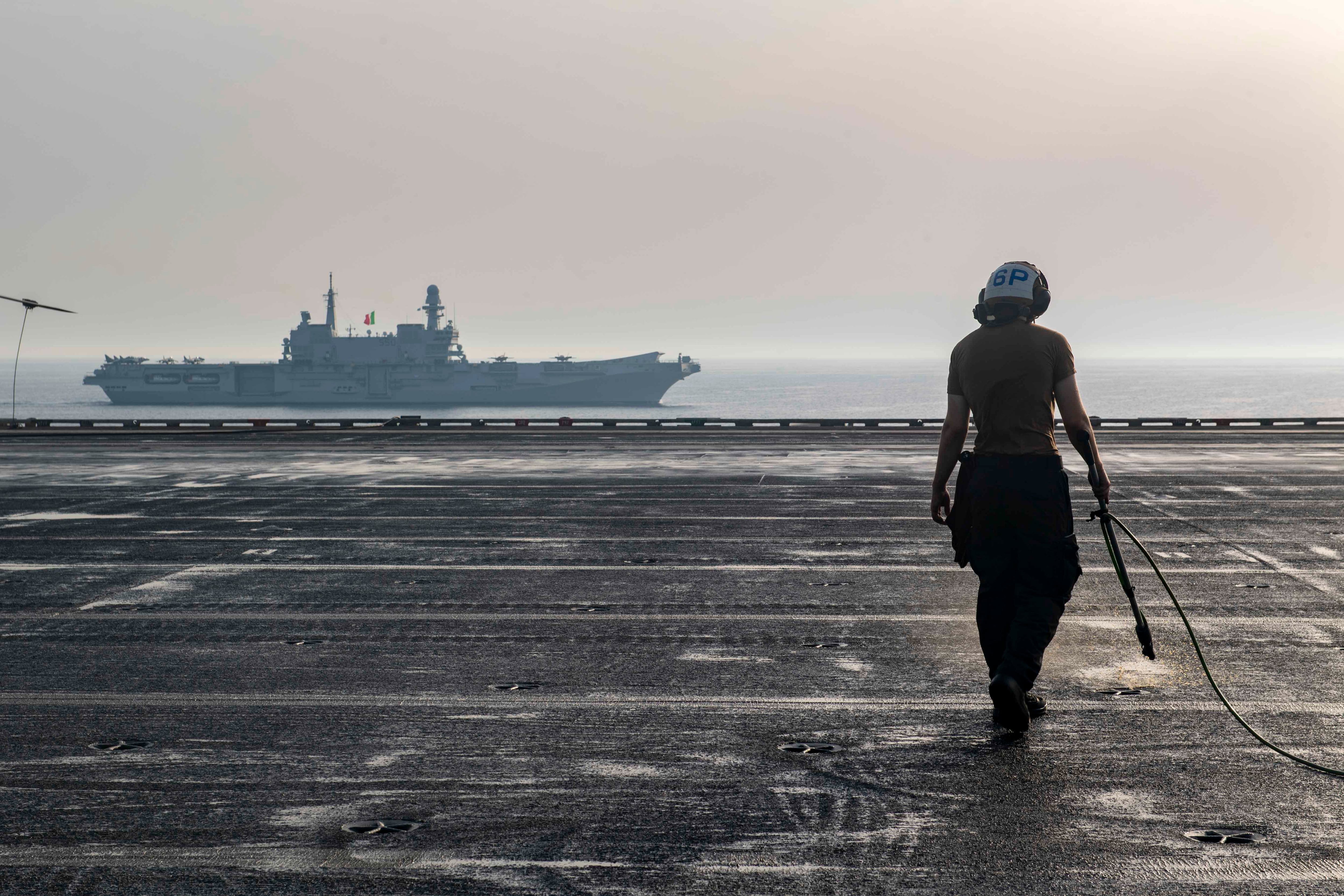
Carriers like the Truman, Bush and Ford faced roughly nine months at sea during their respective deployments in recent years – up from the standard seven-month deployment schedule.
Out on the West Coast, the carrier Nimitz underwent a roughly 11-month deployment that spanned most of 2020 and the first part of 2021.
“As long as combatant commanders want to have these ships on a fairly constant basis, these types of situations are going to come up,” Martin said. “For the foreseeable future, these types of delays, extended deployments, are probably likely.”
As Ike’s deployment fate hung in the balance before leaving the Middle East this spring, Navy officials said in a statement to Navy Times that “the flexible nature of a carrier strike group allows us to be prepared to conduct operations for as long as needed.”
Capacity Issues
Experts say the taxed carrier fleet comes from a mix of too few ships and global events that are beyond the control of anyone in Washington.
Events like the Israel-Hamas war have unexpectedly placed an additional strain on the fleet – especially for ships based on the East Coast.
RELATED
The composition of the carrier fleet allows the Navy to deploy a carrier in the Indo-Pacific, but not in both the Middle East and European theaters simultaneously, where the Iran-Hamas and Russian threats linger, respectively, according to Bryan McGrath, a former destroyer captain and head of the FerryBridge Group defense consulting firm.
Before Hamas’s Oct. 7 attack on Israel, the East Coast carrier Ford was operating in the Mediterranean Sea, serving a deterrence role against Russia, as carriers have since the outbreak of the Ukraine war in early 2022.
But after that, Ford and then Ike’s, focus turned toward Israel and the Middle East.
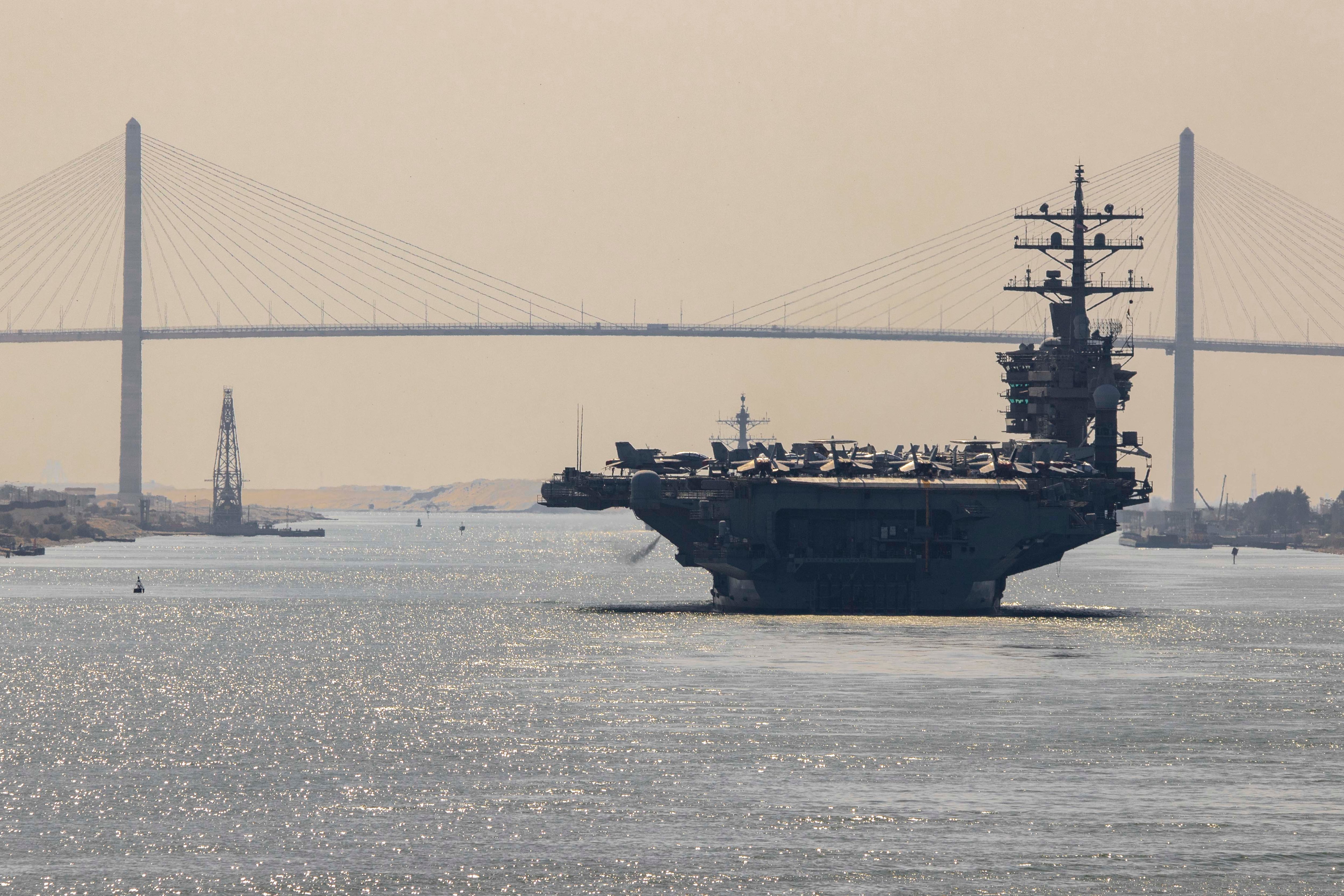
“We are a nation that has a need for three [carriers] out and about all the time,” McGrath said. “And we are a nation that possesses essentially enough to do two at a time…The bottom line is that these assets are tremendously in demand because nothing says you care more than an aircraft carrier.”
“This just so seriously undercuts the case of the people who talk about the aircraft carrier being obsolete – and it’s not,” McGrath added.
This capacity issue would be exacerbated in the event of multiple global crises, experts warn. Countering multiple threats across the globe was the focus of the Navy and Marine Corps’ Large Scale Exercise in 2023, testing the services’ ability to globally synchronize operations to defeat several threats in different geographic regions at the same time.
The Navy has not made the results of that exercise public.
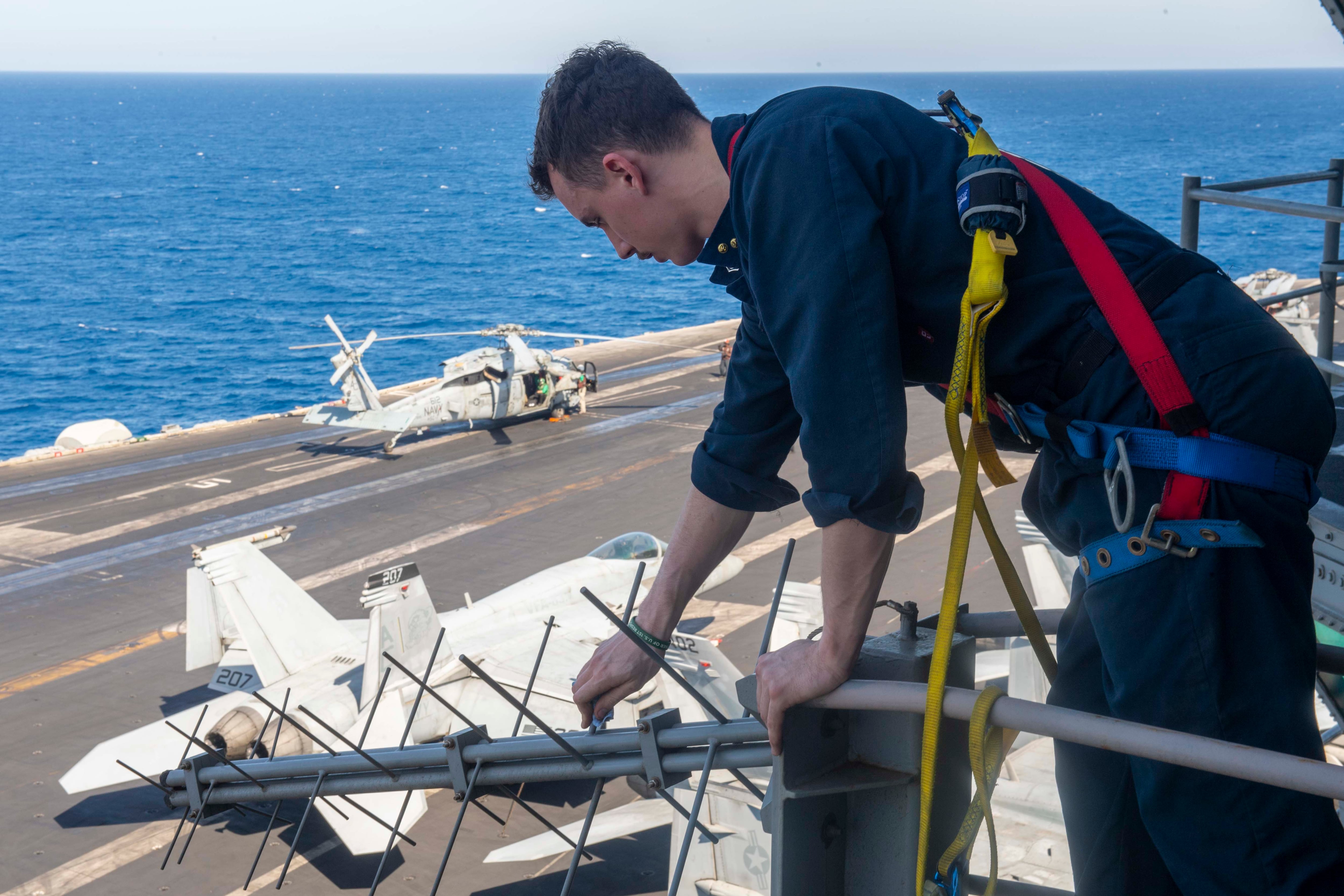
Outside of exercises, experts agree the Navy would encounter difficulties juggling simultaneous conflicts in various geographic areas.
The current fleet, Martin said, “is not sufficient to meet multiple crises at once without taking some extraordinary measures.”
RELATED
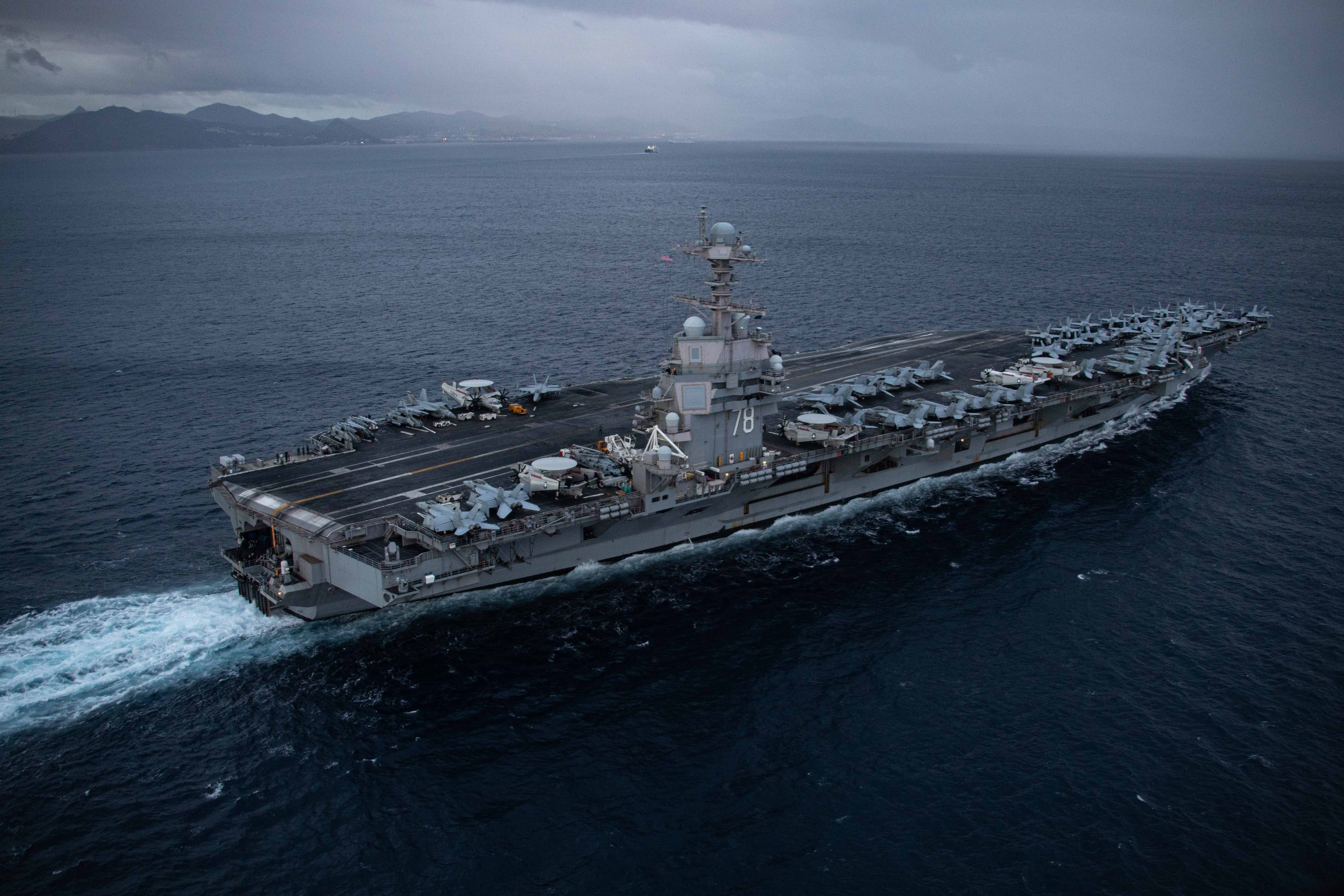
Ships, including carriers, would face extended deployments and maintenance delays, an arrangement that would be difficult to sustain for an extended period, he said.
While the Navy likely won’t build any more aircraft carriers beyond what’s already scheduled, given technological advancements and the fact that multiple Ford-class carriers are still years away, Martin said the service could reevaluate its force structure and identify ways to meet requirements that carriers provide through alternative means.
“Ultimately, it’s going to take more of something in order to meet what I think are bonafide national needs,” Martin said.
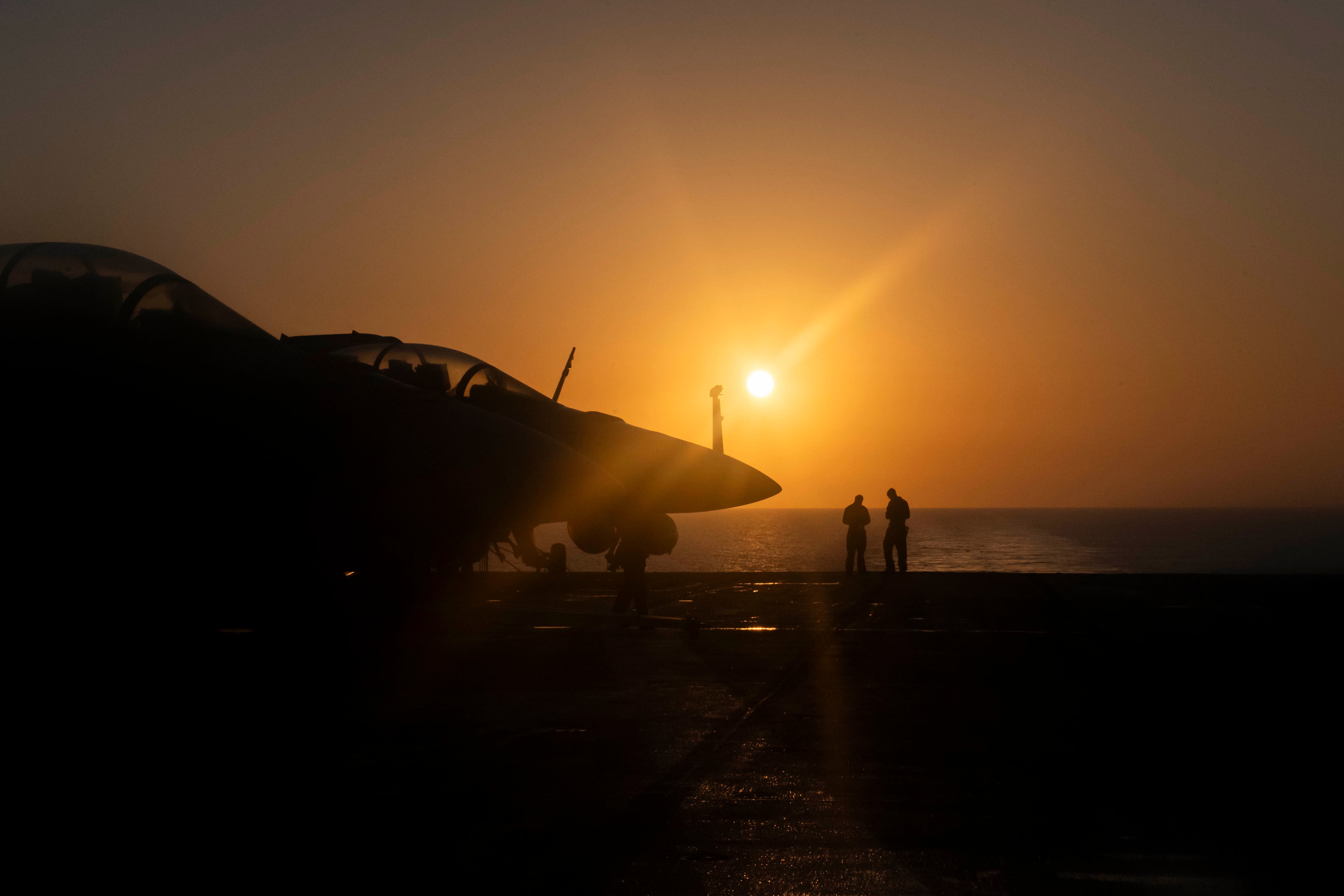
The Navy’s new long-range shipbuilding plan released in March calls for an inventory of 11 or 12 aircraft carriers over the course of the next decade. Overall, the proposal sets a goal of 381 ships by the year 2042 – up from the previous target of 373 ships by that time.
Still, accomplishing these numbers are dependent on the industry eliminating lengthy backlogs and cost overruns, coupled with consistent congressional funding.
McGrath said pouring more funding into a bigger fleet could mitigate some of today’s challenges.
“Money doesn’t solve everything, but it solves an awful lot of things, and right now we are spending woefully less money than we need to,” McGrath said.
Why additional strain on the East Coast?
Experts attribute part of this strain to East Coast carriers having to shoulder more geopolitical hotspots than their brethren elsewhere.
Currently, the West Coast hosts the aircraft carriers Carl Vinson, Abraham Lincoln, Nimitz and Theodore Roosevelt.
The carrier George Washington is completing a deployment to South America this summer as it moves from the East Coast to Japan after wrapping up an extended and oft-delayed mid-life refueling and complex overhaul, or RCOH, in Virginia.
GW will replace Ronald Reagan, which will leave Japan and undergo maintenance at Puget Sound Naval Shipyard, Washington.
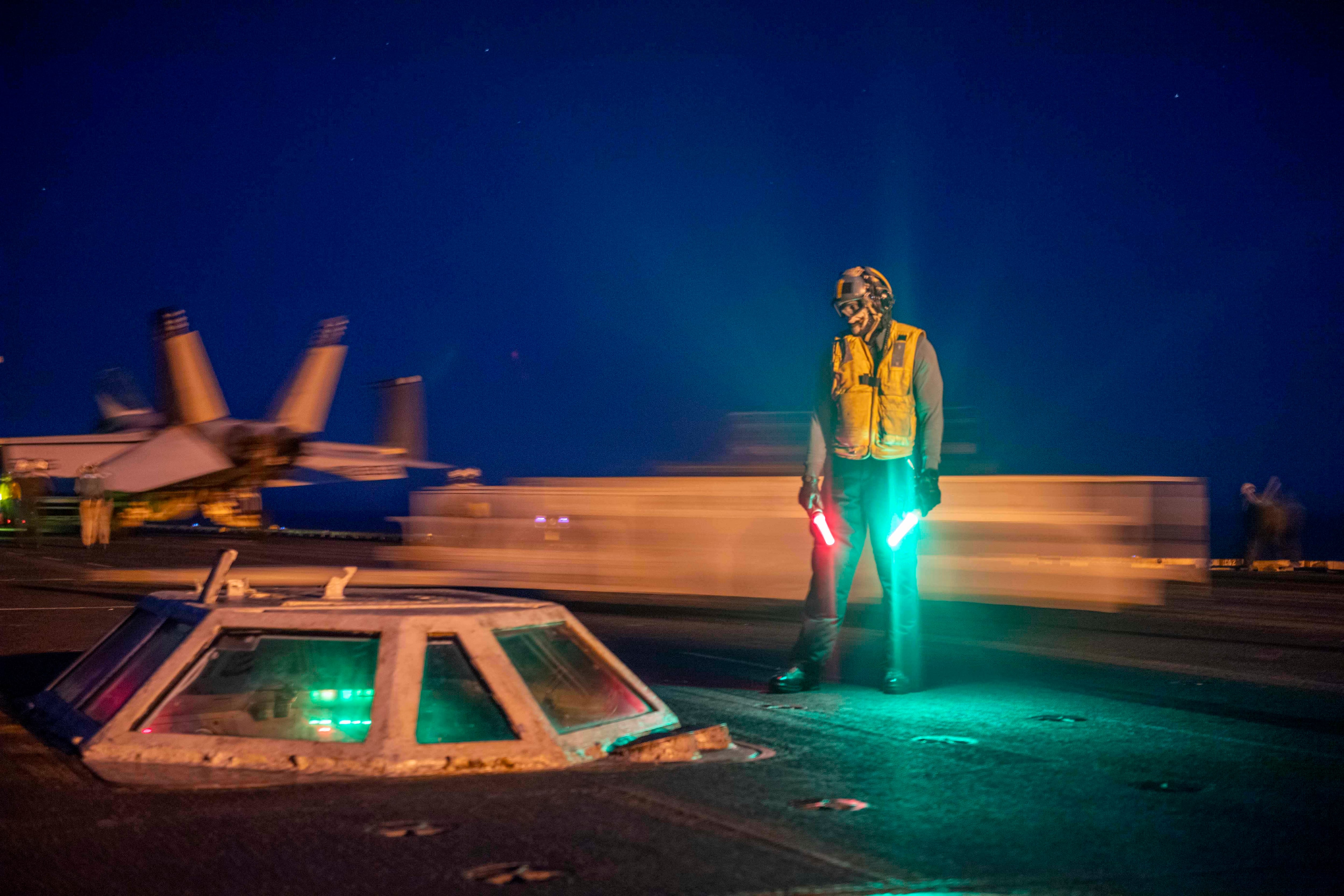
The Ike, Truman, Bush, Ford, George H.W. Bush and Stennis call the East Coast home.
Unlike the West Coast carrier fleet, nearly all those East Coast carriers are unavailable to deploy due to various maintenance needs.
Stennis will be out of the picture for some time as it undergoes its own mid-life overhaul.
Bush returned home from its own extended deployment last year and entered maintenance in December, and Ford got home from its extended cruise in January and is expected to undergo roughly a year of work before it can go again.
That leaves Truman as the next East Coast carrier up.
It wrapped up a maintenance period in December, and the Navy initially said it would deploy in early 2024, which would have seen it eventually replacing Ike in the Middle East.
But that didn’t happen, and officials now say Truman likely won’t deploy until later this year, following its pre-deployment Composite Training Unit Exercise, or COMPTUEX, this summer.
While West Coast carriers are largely able to focus solely on Indo-Pacific deployments, East Coast carriers are having to navigate cruises in Europe and the Middle East, given the current state of the world.
“The East Coast is under pressure,” McGrath said. “Again, fewer carriers servicing a larger number of hotspots creates deficits.”
Cyclical Maintenance Problems
While the carrier deployment schedule is designed to accommodate the extensions facing East Coast carriers, the main consequence of these lengthy deployments is the maintenance the carriers must undergo once they return, said Bryan Clark, a retired submarine officer and director of the Hudson Institute think tank’s Center for Defense Concepts and Technology.
In addition to throwing the maintenance schedule out of whack, extended deployments wear the aging carriers down faster, increasing the likelihood of new breakdowns accumulating, which presents additional challenges when those carriers go into the yards, Clark said.
RELATED
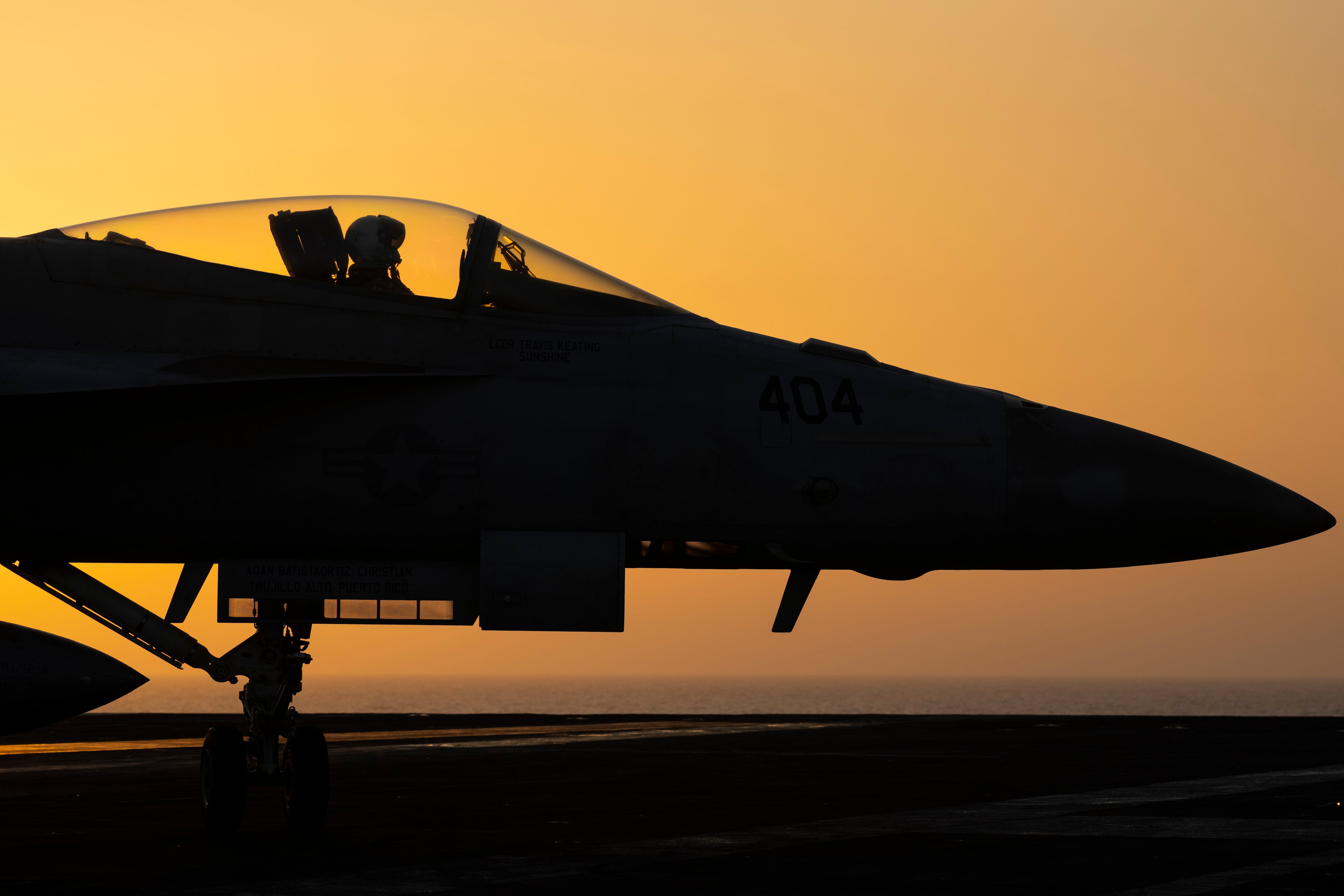
Scant data exists for how a carrier reaching the 45 or 50-year point will perform, and what kind of maintenance such a ship will require, Clark said.
“You’re seeing that with some of the older carriers, how they get delayed coming out of maintenance, because new stuff is breaking that has not broken before,” he said.
The Eisenhower, the second oldest carrier in the fleet, commissioned in 1977, underwent 15 months of maintenance after it returned from a double-pump deployment in 2021.
Following this most recent cruise, McGrath predicted Ike would “almost certainly” face another lengthy period in the yard.
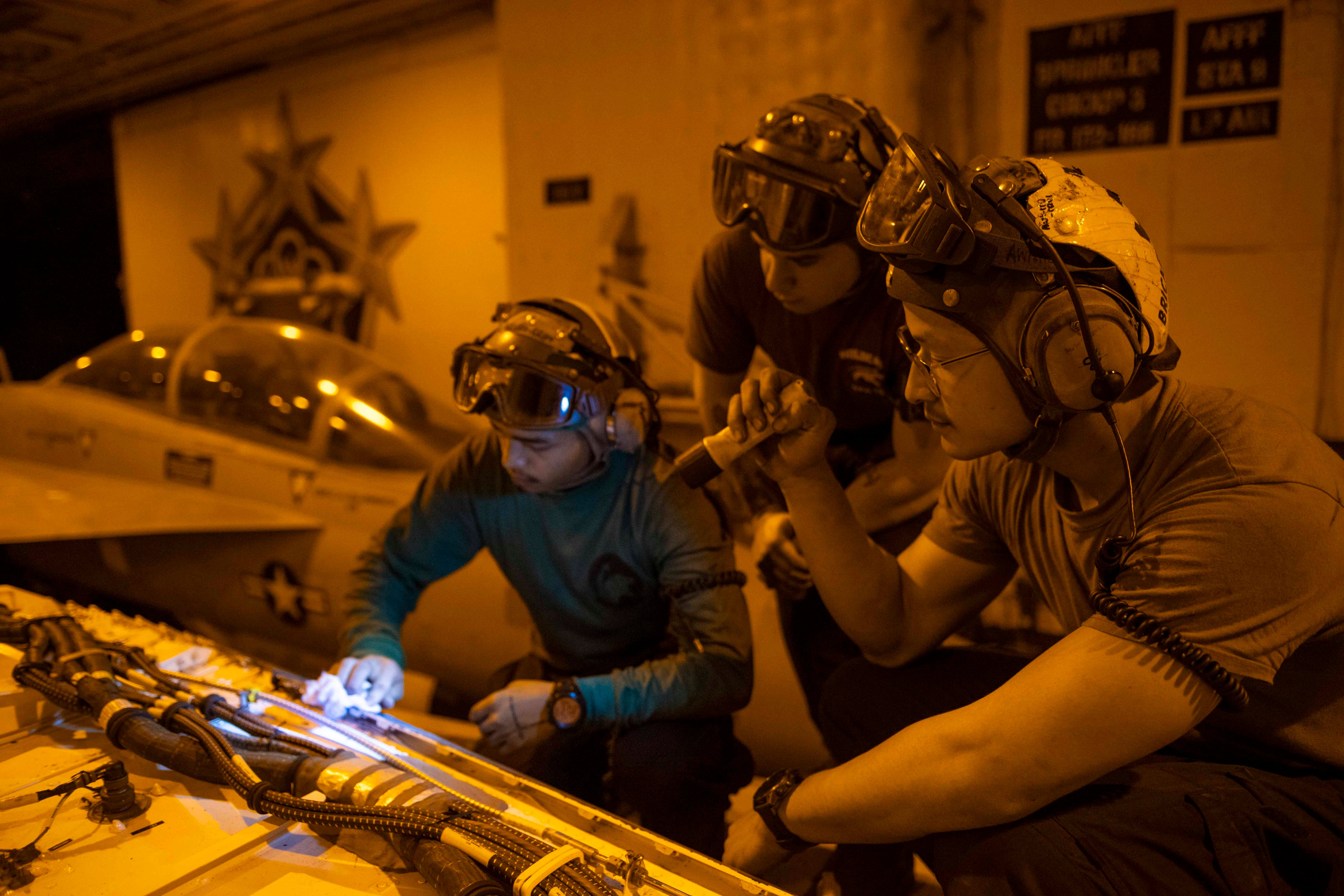
“Without regular maintenance, the more things break, the more things get added to packages, those packages get bigger and the potential time that the ship spends in the yard potentially increases,” McGrath said. “The more you spend in the yard, the less time you have to get ready to get back out and get going next time.”
In the end, the Navy has limited options to remedy the strain currently afflicting its carriers, McGrath said.
“There are only two levers to pull: a larger Navy, smaller requirements,” McGrath said. “Either the nation decides that it has fewer things for the Navy to do…or it builds a bigger Navy.”
Under the Navy’s Optimized Fleet Response Plan, introduced in 2014, aircraft carriers follow a 36-month cycle for maintenance, training and deployments. But across the fleet, surface ships remain plagued with maintenance delays.
Specifically, the Government Accountability Office found there was a seven-day increase in maintenance delays for aircraft carriers between 2014 and 2021, according to a report released last year.
Another GAO report from 2022 found the Navy projecting that it faced a maintenance backlog that totaled nearly $1.8 billion.

On the bright side, that report noted that “aircraft carriers have experienced minimal increases in backlog” and the bulk of the backlog stemmed from other surface ships.
“There are still difficulties getting ships out of shipyards on time, and I think that that’s something that’s going to take a long time to get corrected,” Martin said.
Doing the work
Pentagon officials argue that the mission performed by Ike and its strike group was critical to keeping the region from exploding since Hamas’ attack on Israel.
They say a significant U.S. naval commitment to the region sends a strong signal to the commercial shipping industry that vessels can get protection as they travel the crucial transit route through the Red Sea, from the Suez Canal to the Bab el-Mandeb Strait.
About 12% of the world’s trade typically passes through the waterway that separates Africa and the Arabian Peninsula, including oil, natural gas, grain and everything from toys to electronics.
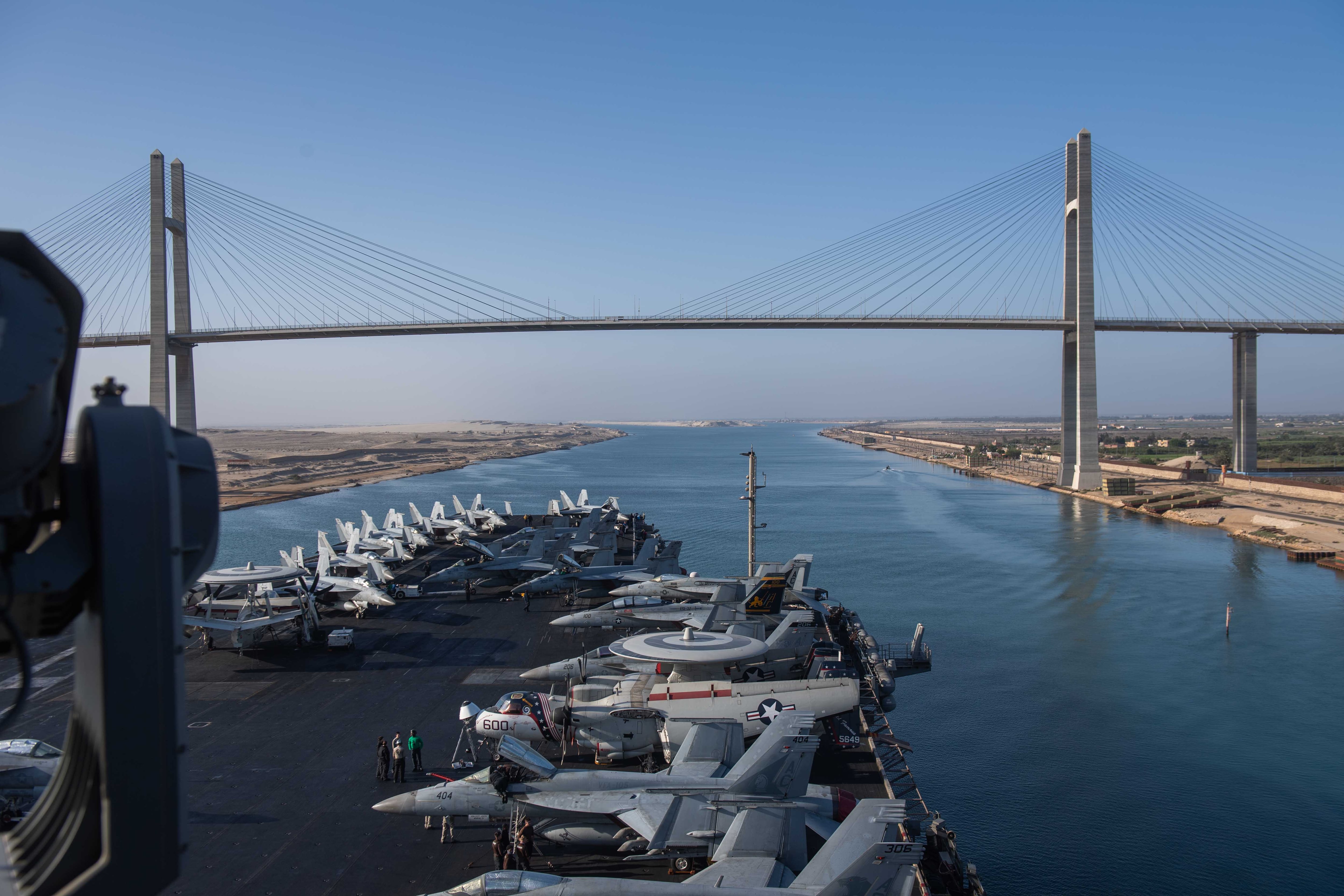
The Houthis have attacked ships since November, saying they want to force Israel to end its offensive in the Gaza Strip against Hamas. But the ships targeted by the Houthis have largely had little or no connection to Israel, the U.S. or other nations involved in the war. The rebels have also fired missiles toward Israel, though they have largely fallen short or been intercepted.
Ike and its strike group–including the cruiser Philippine Sea and the destroyers Gravely and Mason–also have participated in five major joint missions with British forces to target dozens of the militant group’s drones, missile launchers and other facilities and targets in Yemen.
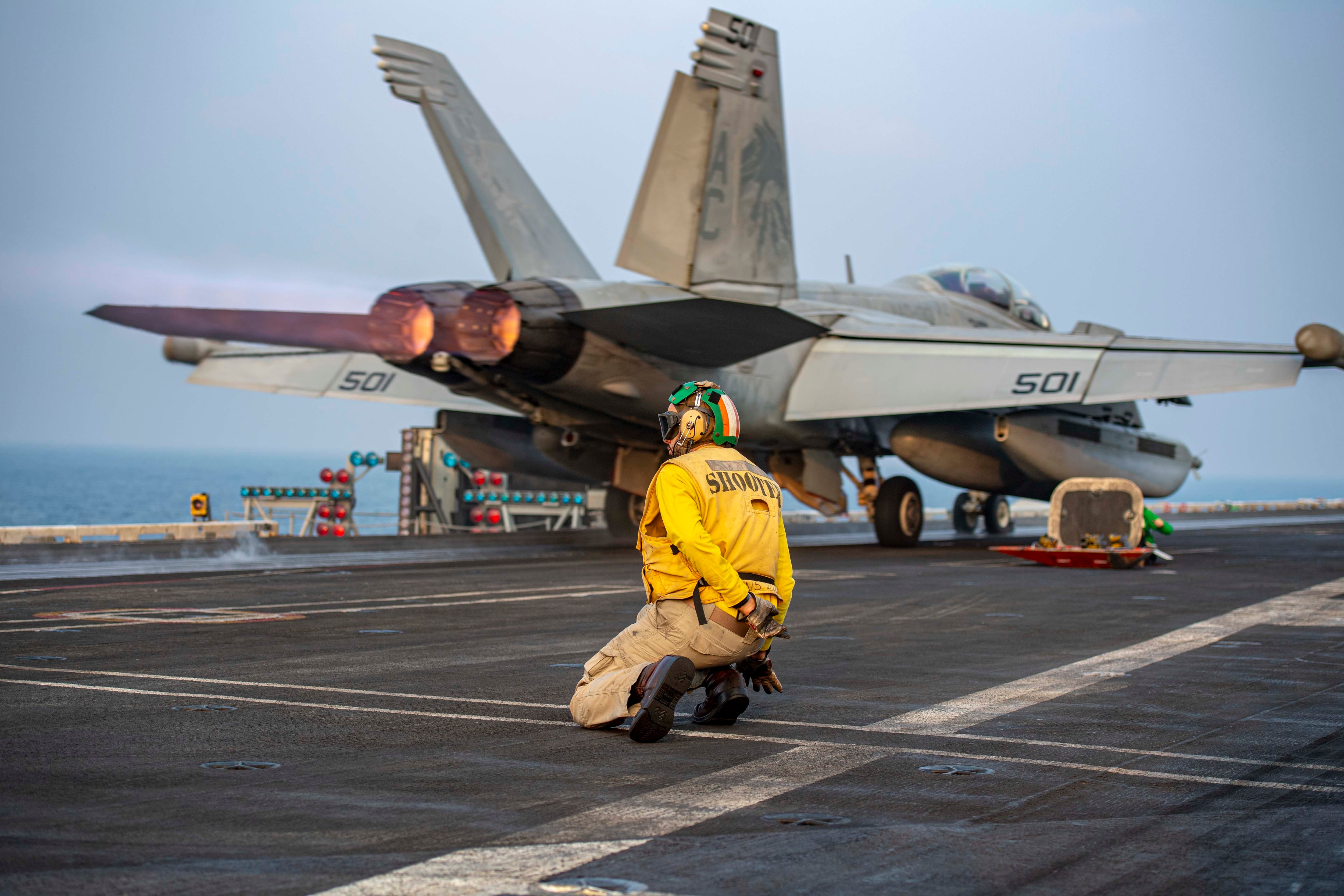
All told, Ike’s air wing has flown more than 12,100 sorties, totaling over 27,200 flight hours, and the strike group has launched more than 350 air-to-surface weapons and more than 50 air-to-air missiles.
The warships have each traveled more than 55,000 miles, and they’ve launched more than 100 Standard and Tomahawk missiles. In all, the strike group has gone after about 430 either pre-planned or dynamic targets in its mission to defend U.S., coalition and merchant ships.
The Associated Press contributed to this report.

